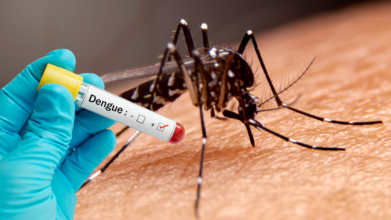- Health Conditions A-Z
- Health & Wellness
- Nutrition
- Fitness
- Health News
- Ayurveda
- Videos
- Medicine A-Z
- Parenting
- Web Stories
3 Science-Backed Methods To Quit Smoking For Good

Smoking is one of the leading causes of preventable deaths worldwide, contributing to severe health problems like cancer, cardiovascular diseases, and respiratory issues. Despite widespread awareness of its harmful effects, many people find quitting smoking to be an uphill battle.
Several studies have explored the best methods to stop smoking, identifying science-backed approaches that can help individuals break free from nicotine addiction.
A recent study published in the journal Addiction, emphasizes three primary methods proven effective for quitting smoking: behavioral support, prescription medications, and nicotine replacement therapy (NRT). These strategies have shown varying levels of success in aiding smokers to quit permanently. In addition, alternative methods like e-cigarettes and mindfulness-based techniques have gained traction in helping reduce smoking addiction.
Quitting smoking is more than just a decision; it’s a commitment to significantly improving your health and well-being. Smoking has been directly linked to various cancers, lung diseases, and heart conditions. In the long term, stopping smoking can lower your risk of these life-threatening conditions.
According to the study, individuals looking to quit smoking should consider using Varenicline (sold as Chantix/Champix), Cytisine (a plant-based supplement available in Europe and Canada), or nicotine e-cigarettes.
“Quitting smoking is difficult, and some people find it harder to quit than others, but tobacco is uniquely deadly among legal consumer products, so it’s important to seek help quitting,” said lead investigator Jonathan Livingstone-Banks, a lecturer and researcher in evidence-based health care with the University of Oxford in the U.K.
When you quit smoking, the body begins to heal almost immediately. In just 20 minutes after your last cigarette, blood pressure and heart rate begin to normalize. Within a few weeks, lung function improves, and over time, the risk of heart disease and cancer decreases dramatically.
“There’s a range of effective forms of support for smoking cessation, and cytisine, varenicline and e-cigarettes are all evidence-based ways to greatly increase people’s chances of successfully quitting smoking,” Livingstone-Banks added.
Three Methods to Quit Smoking
1. Behavioral Support: Quitting smoking isn’t just about resisting cravings. Often, behavioral support through counseling or therapy is crucial for tackling the psychological aspects of addiction. Behavioral therapy involves working with a trained professional to identify triggers, develop coping strategies, and create a tailored quit plan. Research shows that combining counseling with other quit methods can significantly increase success rates.2. Prescription Medications: Some medications, such as varenicline (Chantix) and bupropion (Zyban), have been shown to help people quit smoking by reducing cravings and withdrawal symptoms. Experts suggest that varenicline works by blocking the effects of nicotine in the brain, while bupropion is an antidepressant that helps manage withdrawal symptoms. Both medications are generally more effective when combined with behavioral therapy.
3. Nicotine Replacement Therapy (NRT): Nicotine replacement products, such as nicotine patches, gums, lozenges, and nasal sprays, deliver controlled amounts of nicotine to ease withdrawal symptoms. According to experts at Harvard Health, NRT can double the chances of quitting by alleviating physical cravings while the person works on overcoming the psychological addiction.
“For behavioral support, evidence is strongest for counseling and for programs that reward people for stopping smoking,” said senior researcher Jamie Hartmann-Boyce, an assistant professor of health policy and management with the University of Massachusetts Amherst School of Public Health and Health Sciences
In addition to the top three methods mentioned, there are other approaches that have been gaining popularity in recent years:
1. Mindfulness and Meditation: Studies have shown that mindfulness-based therapies, such as meditation and deep breathing exercises, can be beneficial for reducing smoking addiction. Mindfulness helps smokers manage stress, one of the main triggers for smoking, by promoting relaxation and mental clarity.
2. Support Groups: Joining a support group can provide a sense of community and encouragement throughout the quitting process. Whether in person or online, support groups offer a platform for sharing experiences, tips, and emotional support, which can greatly enhance the chances of quitting.
Is there a Best Way to Quit Smoking?
Combining different strategies often yields the best results for quitting smoking. A combination of behavioral therapy, medication, and nicotine replacement therapy has been shown to be the most effective way to quit smoking. In fact, research suggests that smokers who use a combination of these methods are more likely to stay smoke-free than those who rely on a single approach.The key to quitting smoking is persistence. While some individuals succeed on their first attempt, many need multiple tries before they are able to quit for good. This doesn’t mean failure, but rather a learning process, as each attempt brings you closer to success.
For the new review, researchers considered evidence pooled in 2023 from 319 studies involving more than 157,000 participants.
To that data, they added another 75 clinical trials focused on varenicline and cytisine.
“Our team will continue to review evidence on the best ways to help people quit smoking, as we know how vitally important this is to people who smoke and to public health,” Hartmann-Boyce said.
Quitting smoking can be a challenging journey, but it's important to seek professional guidance when needed. Speak to your doctor about the best approach for you, especially if you’ve tried to quit multiple times without success. Healthcare providers can offer personalized advice and may prescribe medications or recommend therapies to increase your chances of success.
While quitting smoking may be tough, it’s absolutely achievable with the right combination of methods and support. Whether it’s through medication, therapy, or alternative approaches like mindfulness, taking the first step is crucial. Don't hesitate to seek help—your health is worth it.
Measles Outbreak Surges Across US, Experts Share Precaution Tips

Credits: Canva
Health authorities have confirmed a sharp rise in measles cases across the US this year, with more than 11,300 infections and 23 deaths reported in ten countries by mid-September. According to the Pan American Health Organisation (Paho), this marks a staggering 31-fold increase compared to the same period in 2024, when only 358 cases were recorded. With numbers climbing, it is important to stay aware of the outbreak, understand how it spreads, and follow key safety measures recommended by experts.
Measles Outbreak Growing in Parts of Utah and Arizona
One of the most severe measles outbreaks in the United States has emerged in areas along the Utah-Arizona border. In Southwest Utah, 22 of the 23 confirmed cases are among unvaccinated school-aged children, according to the Southwest Utah Public Health Department. Across the border in Mohave County, Arizona, health officials have confirmed 42 cases, believed to be linked to the Utah cluster.An NBC News and Stanford University review found that large sections of the U.S. lack adequate vaccine coverage to prevent the spread of diseases like measles. In Washington County, Utah, about 79% of kindergarten children are vaccinated, which is only slightly higher than Gaines County, Texas, the center of the earlier 2025 outbreak and far below the 95% vaccination rate needed to maintain herd immunity.
Measles Symptoms
Symptoms usually appear about 10 days after exposure and begin with cold-like signs such as a runny nose, cough, and red, watery eyes. White spots inside the mouth, called Koplik’s spots, and fever follow. Within a few days, a distinctive red-brown rash appears, spreading from the face down to the body.- Early Symptoms (First 3–4 Days)
- Fever: High fever, sometimes reaching 105°F (40.6°C)
- Cough: Persistent, dry cough
- Runny Nose: Often with sneezing
- Red, Watery Eyes: Also known as conjunctivitis, with light sensitivity
- Sore Throat: Discomfort or irritation
- Fatigue: Extreme tiredness and irritability
- Body Aches: Mild pains in muscles and joints
- Koplik’s Spots: Tiny white spots with bluish centers that appear inside the mouth, cheeks, and throat a day or two before the rash. Though not always visible, they are considered a hallmark sign of measles.
The Rash (3–5 Days After Symptoms Begin)
- Appearance: Red-brown, flat spots with some raised bumps
- Spread: Begins on the face or neck, near the hairline, and spreads downward to the chest, arms, and legs
- Duration: Lasts for about 4 to 7 days
What Does Measles Look Like?
Measles presents as a rash of red-brown spots that often merge together, starting on the forehead before spreading to the rest of the face, body, arms, and feet. The rash usually develops three to five days after the first symptoms appear. On darker skin tones, the rash may be less noticeable, appearing purplish or darker against the skin, according to the CDC.Is Measles Contagious?
Yes, measles spreads very quickly. Experts estimate that if one infected person is in a room with unvaccinated individuals, 9 out of 10 will likely catch it. A person is contagious about four days before the rash appears and remains infectious until about four days after the rash begins.Measles Precaution TipsThe best defense against measles is vaccination. Two doses of the MMR (measles, mumps, rubella) or MMRV (measles, mumps, rubella, varicella) vaccines are recommended. Other preventive steps include washing hands frequently, disinfecting high-touch surfaces, wearing masks in high-risk areas, and avoiding close contact with sick individuals. While most people receive the vaccines in childhood, adults who are unvaccinated can also get immunised to protect themselves.
Pollution Could Be Slowly Eroding Your Cognitive Health: Study Shows Link Between Alzheimer's And Toxic Air Particles

(Credit-Canva)
A few years ago, we were being warned how air pollution may affect our lungs and make us weak. Now, we are facing this reality and much worse! High levels of air pollution may worsen Alzheimer's disease by speeding up the buildup of harmful proteins in the brain.
According to a new study, people with Alzheimer's disease who lived in areas with more air pollution had a greater buildup of these proteins and a faster decline in their thinking and memory skills.
The study, published in the JAMA Neurology from the Perelman School of Medicine at the University of Pennsylvania, showed that small toxins from pollution can damage our brain. The researchers explained that not only does this increase the risk of dementia, but it also makes Alzheimer’s worse. Could this mean pollution ages and damages our brain faster than our biological age? The researchers explored these question as well as how the small particles from pollution cause our brain health to deteriorate.
How Does Air Pollution Raise Risk Of Dementia?
For the first time, researchers studied brain tissue from people who had Alzheimer's. They found that those who lived in areas with higher levels of tiny air particles, even for just one year, had more severe buildup of amyloid plaques and tau tangles. These are two key signs of Alzheimer's in the brain. These individuals also experienced a quicker decline in their mental abilities, including memory loss, poor judgment, and difficulty with daily tasks.
"This study shows that air pollution doesn’t just increase the risk of dementia—it actually makes Alzheimer’s disease worse," said Dr. Edward Lee, a co-director of Penn's Institute on Aging.
What Are Harmful Pollution Particles Called?
Air pollution contains very small particles, often called fine particulate matter or PM2.5. These particles are less than 2.5 micrometers wide—about half the width of a single spider web strand. They come from things like car exhaust, factory smoke, and wildfires. Because they are so small, they can be inhaled and absorbed into the bloodstream, causing health problems. Past studies have already linked PM2.5 to memory loss and cognitive decline.
How Small Pollution Particles Affect Brain
Researchers looked at over 600 brain samples from a brain bank. By using satellite data and local air monitors, they were able to estimate the level of PM2.5 where each person lived. They found that for every small increase in PM2.5, the risk of more severe amyloid and tau buildup increased by 19 percent.
In addition, the study showed that those who lived in highly polluted areas and had more advanced brain damage also had more severe memory loss, speech difficulties, and poor judgment.
While this study focused on air pollution based on where people lived, researchers noted they couldn't account for other personal exposures, like secondhand smoke or exposure to chemicals at work.
According to Dr. Lee, "even just a year living in an area with high levels of pollution can have a big impact on a person’s risk for developing Alzheimer’s disease. It underscores the value of environmental justice efforts that focus on reducing air pollution to improve public health."
What Makes The Dengue Season 2025 Different? Unique Symptoms Of Dengue In 2025 And How Long It Lasts

Credits: Canva
Dengue is no longer the seasonal tropical infection many once assumed it to be, it has become a global health threat with alarming reach. According to the World Health Organization (WHO), dengue cases rose eight-fold between 2000 and 2019.
In 2023 alone, more than 5 million cases were reported across 80 countries. By mid-2024, that number had more than doubled in the Americas, with 10.6 million cases and counting. Experts warn the real figure is much higher due to underreporting and misdiagnosis.
No longer just a tropical disease
Traditionally, dengue was confined to tropical and subtropical zones. But today, nearly half the world’s population, 4 billion people, live in areas at risk. Outbreaks are now appearing in unexpected places, including Europe and parts of the United States. Warmer, wetter climates linked to climate change, combined with rapid urbanization and global travel, have allowed Aedes mosquitoes to expand their territory. In São Paulo, Brazil, dengue cases even extended into the winter months of 2023, defying the usual seasonal pattern.
Shifting patterns and stronger strains
All four dengue virus types (DENV-1 to DENV-4) still circulate, but their distribution and dominance are shifting. In São Paulo, a 2023 study revealed that more than 93% of infections were caused by DENV-1, with cases rising significantly during unusual weather conditions.
The persistence of high rainfall and moderate temperatures has created near year-round breeding grounds for mosquitoes. These changes mean dengue is no longer predictable, it now surges outside typical monsoon or summer cycles.
Dengue isn’t just a childhood disease anymore
One striking shift is who is getting severely ill. Dengue was once seen largely as a childhood infection, but doctors are reporting a surge in adult patients requiring intensive care. Even previously healthy adults are landing in ICUs with complications like fluid leakage, internal bleeding, and organ damage
This shift may be due to viral evolution and repeated exposures, while a first dengue infection often causes mild to moderate symptoms, a second infection with a different subtype can trigger severe, even life-threatening illness.
New and unique symptoms emerging
While dengue has long been nicknamed “break-bone fever” for its intense joint and muscle pain, new clinical patterns are being reported:
Prolonged illness: Earlier, many patients recovered within 5–7 days. Now, fatigue, low platelet counts, and weakness can drag on for 2–3 weeks in some cases.
Severe abdominal pain and vomiting: Doctors highlight these as early warning signs of severe dengue.
Dengue shock syndrome: A dangerous complication where plasma leakage leads to a sharp drop in blood pressure. Without urgent medical care, it can turn fatal within hours.
Unusual neurological and liver involvement: Some studies point to rising cases of encephalitis and liver complications, adding complexity to diagnosis and treatment.
These evolving symptoms are making dengue harder to distinguish from other viral illnesses like influenza or COVID-19, often delaying proper treatment.
Why dengue lasts longer now
The duration of dengue symptoms is also changing. While mild dengue typically clears in about a week, experts note that complications, prolonged weakness, and “post-dengue fatigue” are increasingly common. Climate-driven longer mosquito breeding seasons and multiple infections over a lifetime mean more people are being hit harder and taking longer to recover.
Drivers behind the surge
Three major factors fuel this crisis:
- Climate change – Warmer temperatures and heavier rainfall extend mosquito breeding seasons and expand their habitats.
- Urbanization – Poor drainage, construction sites, and stagnant water provide breeding hotspots.
- Global mobility – Increased travel spreads the virus to new regions rapidly.
Prevention remains the strongest weapon
Despite rising cases and changing patterns, dengue remains preventable. Avoiding mosquito bites, through repellents, protective clothing, and eliminating stagnant water, is still the best defense. Vaccines exist but are currently limited to certain age groups with prior dengue exposure. Experts stress early recognition of symptoms and prompt medical care as the difference between recovery and life-threatening complications.
© 2024 Bennett, Coleman & Company Limited

